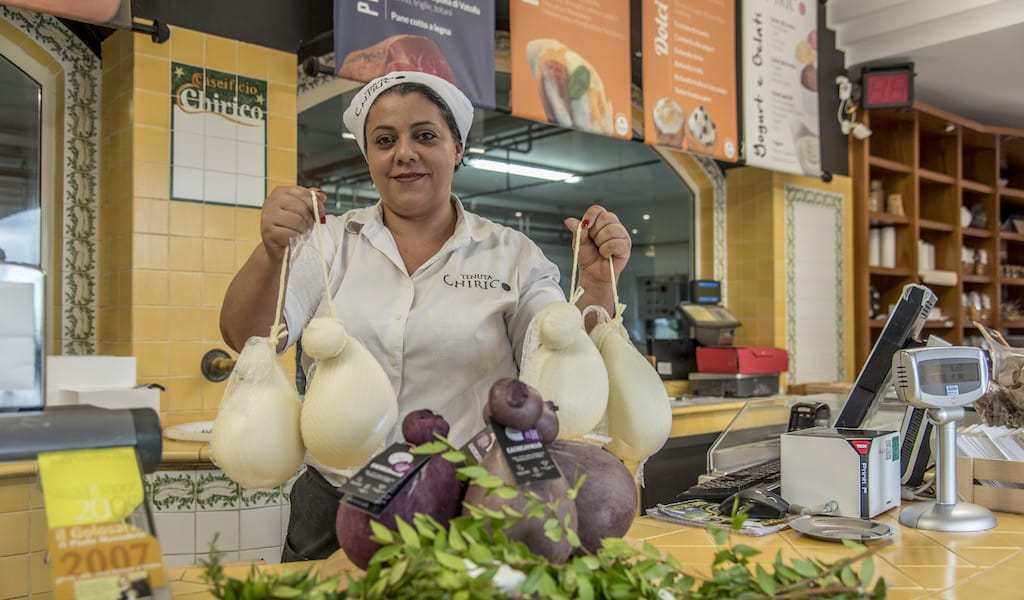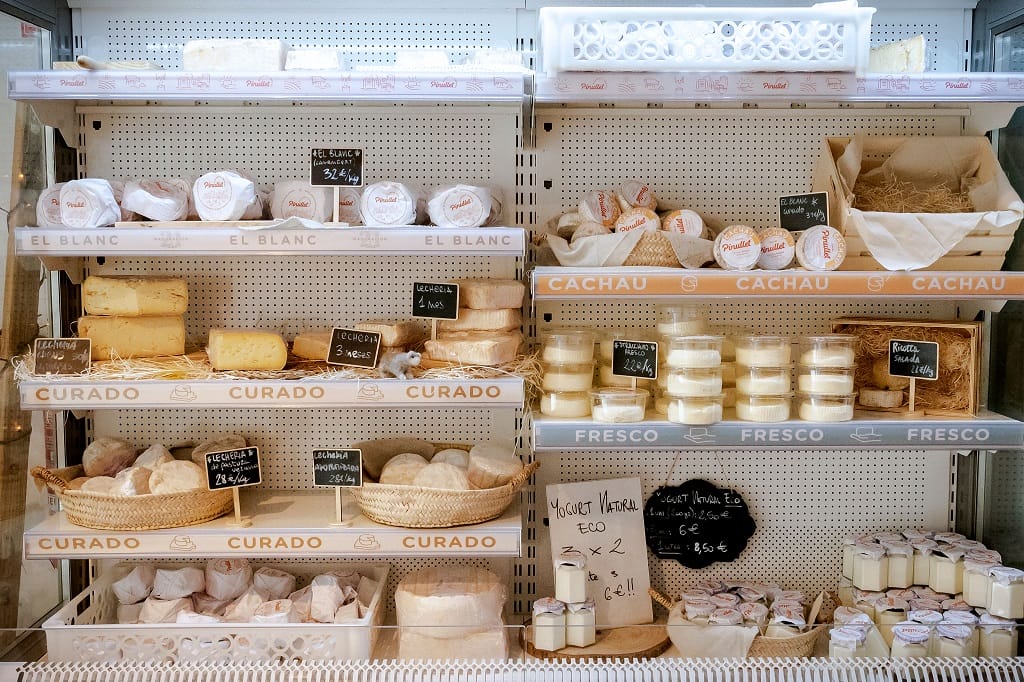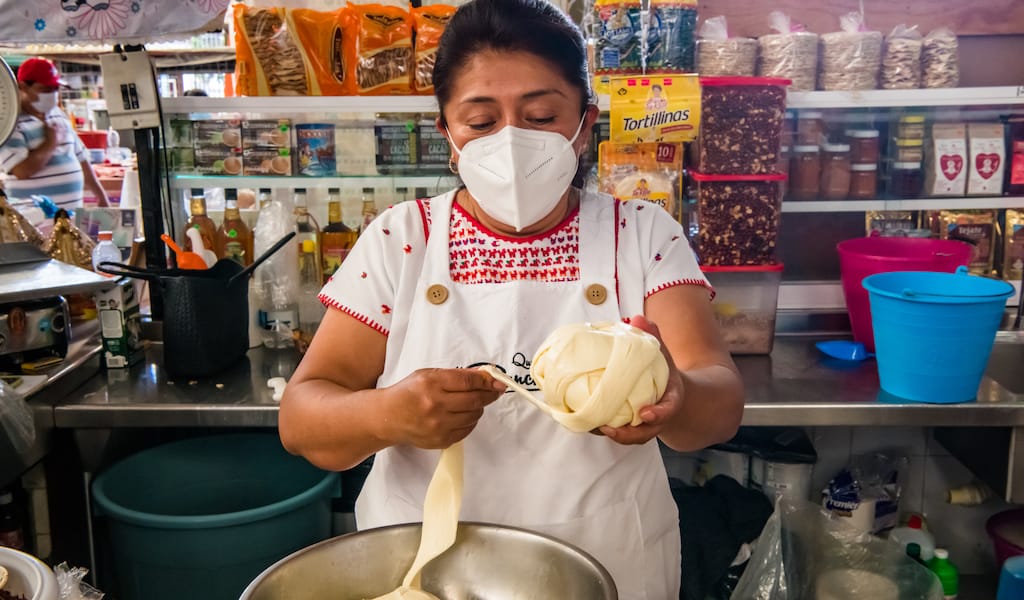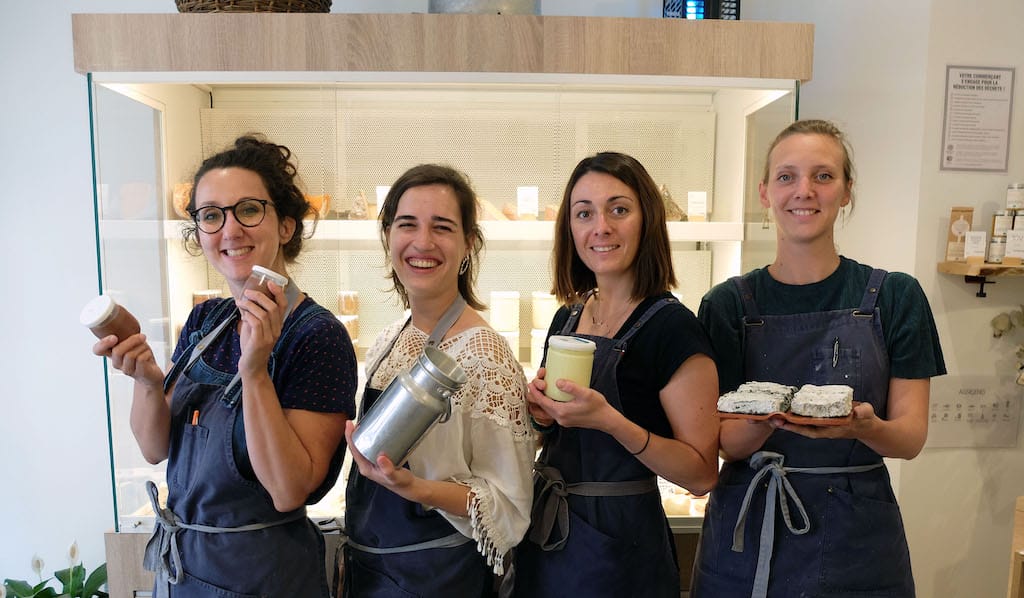In the late 19th and early 20th centuries, Italians – particularly southern Italians – immigrated to the United States in droves. Seeking their fortune in a distant land, they boarded ships with cardboard suitcases containing only a few clothes.
But there was no shortage of good food in those suitcases: bread, cheese and even soppressata, cured pork salami made with the best pieces of the pig (and thus low in fat content), a perennial favorite in southern Italy.
Alas, once they arrived on American soil after the long journey, their soppressate were seized because of a law prohibiting the import of cured meat, among other meat products (a ban that still exists today).
And so, the caciocavallo dell’emigrante (literally “the emigrant’s caciocavallo”) was born. “Our grandparents developed an ingenious system to bring the flavors of their homeland to a very distant country,” explains Silvia Chirico, a cheesemaker in Cilento. “They decided to hide the soppressata inside a caciocavallo cheese!”
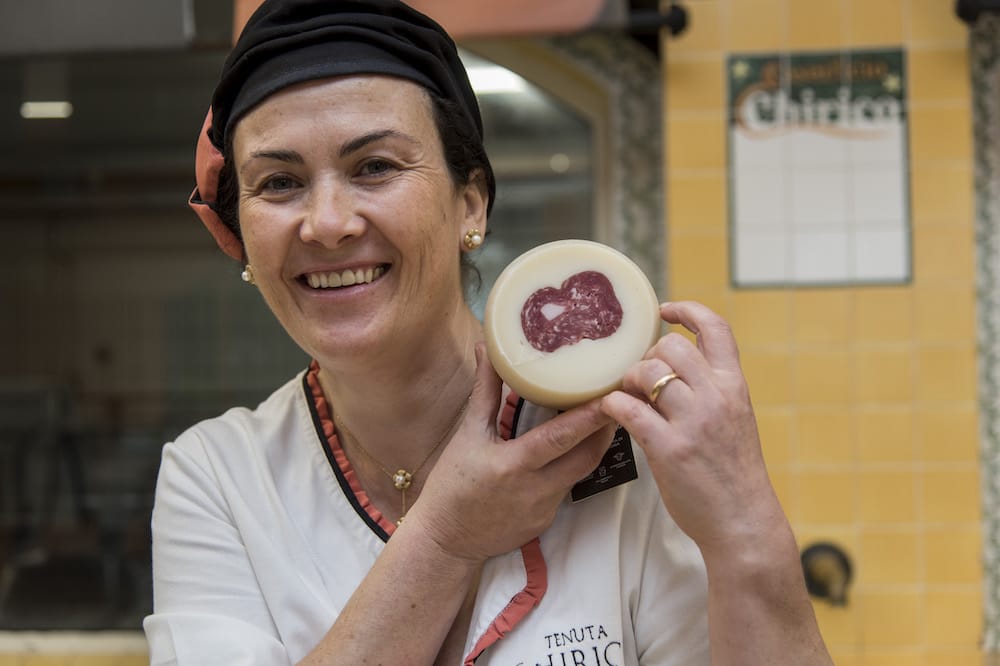
“They had to use a well-seasoned soppressata, the one from the previous year,” adds Benedetto, Silvia’s father. “Caciocavallo, a spun paste cheese, was formed around the soppressata, and it was expected that the cheese would ripen at least a year before facing the journey.”
In this stealth way, the soppressata managed to cross the border. “When the caciocavallo arrived in America it was a party; it was jealously preserved and consumed in small doses so as to prolong the enjoyment of it,” says Benedetto.
“This is why we want to continue these traditions and produce a cheese that is the symbol of an era,” he adds.
That’s exactly what they’re doing at Caseificio Chirico, the family’s diary in Cilento, a two-hour drive south of Naples. While tourists flock to the region for its crystal clear sea, the area is also known for preserving unique artisanal food products made with ancient, manual processes.
“They decided to hide the soppressata inside a caciocavallo cheese!”
Before they began resurrecting traditional cheeses like caciocavallo dell’emigrante, the Chirico family was more concerned with cows. The caseificio (dairy) was founded by Benedetto and his wife, Vittoria, in the 1970s. In the early years, they dealt only with the breeding of cows and the production of high-quality milk. Then in the early 90s, Benedetto began processing his own milk and the family’s cheesmaking business was born.
“In reality, the real founder was my grandfather Giovanni, who was born in the late 1800s and emigrated to America at the age of 11,” Silvia says. “Fortunately he only stayed there for a few years. Back in Italy, he created a small farm, started a family and eventually had five children.”
Today, Giovanni’s son Benedetto, now 75 years old, runs the farm and modern dairy with the help of his three children: Maria, 46 years old; Silvia, 45 years old; and Giovanni, 43 years old.
Wake-up for everyone is at 5 a.m., 365 days a year. “We happily wake up at dawn,” says Silvia, “because only at dawn can you appreciate the noises and colors of the countryside.” Giovanni takes care of the animals while the sisters are dedicated to the transformation of their milk into exceptional products.
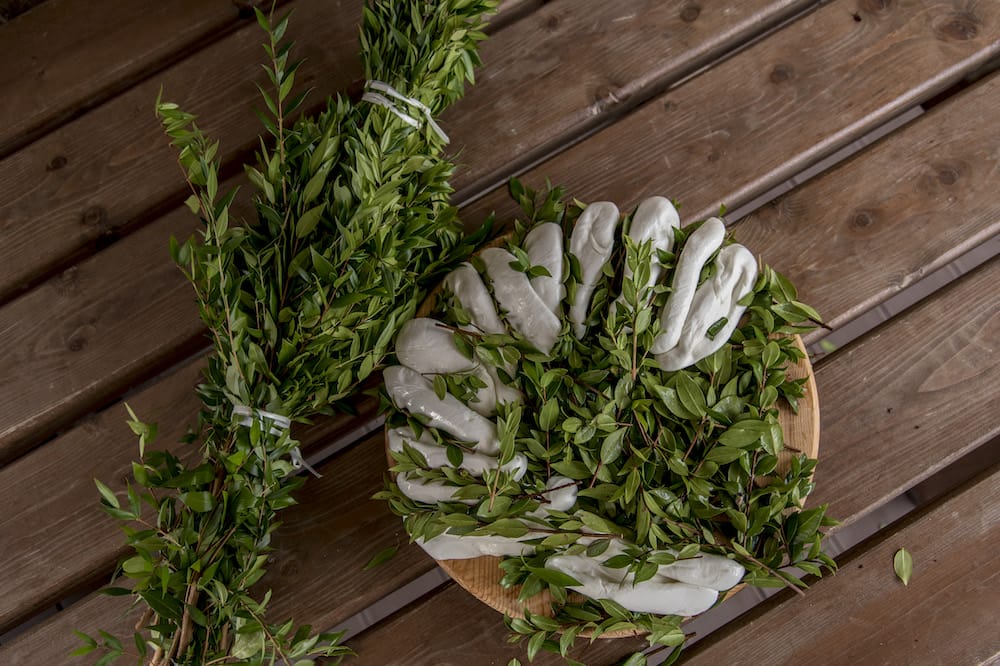
One such product is mozzarella nella mortella (mozzarella in myrtle), an ancient Cilento mozzarella produced exclusively with cow milk (unlike classic mozzarella, which is made with buffalo milk) and wrapped in myrtle branches rather than being preserved in brine.
A Slow Food Presidium product, mozzarella nella mortella has a fascinating history. When shepherds went up into the mountains with their herds, they produced pasta filata (“spun paste”) cheese in a classic tongue shape directly on the spot. To keep the different mozzarella tongues separate, the shepherds wrapped the cheese in myrtle branches, a Mediterranean shrub with many medicinal properties.
This method also allowed for easy transport to market. Each bunch of mozzarella (mazzi di mozzarelle) contained 10 strips of cheese and became a unit of measurement for selling the product.
Today, Silvia still preserves mozzarella in myrtle as it was done hundreds of years ago. And now, just like then, the myrtle releases an aroma and delicately perfumes the mozzarella.
Another cheese preserved using an ancient and ecological technique is caso re vacca ammurriato. This cow milk cheese is seasoned for 60 days and then covered in a thick spread composed of two byproducts: coarse-ground bran and turbid olive oil (a’mmorreca re uoglio, the residue leftover after pressing olives for oil). This preservation system is linked to poverty – two waste elements became a resource for conservation.

After being covered in this thick spread, the cheese is then stored in terracotta containers. The end result is a soft cheese, tasty but above all fresh and without mold.
Finally, they are also producing violet caciocavallo, a cheese with a unique color and flavor thanks to the must of aglianico grapes, which is spread on the outside of the cheese. Once again, a waste product is used give to the cheese a unique yet balanced aroma, this time of wine.
These forgotten cheeses tell the story of historic realities in southern Italy. And the way they are made nowadays reflects our technological age – in 2013, the Chirico family equipped their dairy with a biogas plant that is capable of producing electricity from renewable sources, the first of its kind in Cilento. Modern tools to create old treasures.
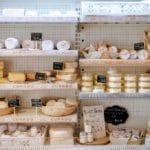 October 1, 2021 Pinullet
October 1, 2021 Pinullet
While many city folks feel the call of Mother Nature and dream of moving to the […] Posted in Barcelona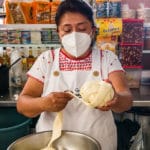 September 9, 2021 Building Blocks
September 9, 2021 Building Blocks
The line between legend and actual history is often blurred by time, particularly when […] Posted in Oaxaca July 20, 2021 Laiterie Marseillaise
July 20, 2021 Laiterie Marseillaise
For all its culinary riches, Marseille is not a mecca of cheese. France’s famous fromage […] Posted in Marseille
Published on November 07, 2019
Related stories
October 1, 2021
BarcelonaWhile many city folks feel the call of Mother Nature and dream of moving to the countryside, Francesco Cerutti had a different idea: “Why not bring the country to the city?” Always innovating, he is trying to “ruralify” Barcelona through an activity that has been strictly connected with pastures, shepherds and the like: cheesemaking. In…
September 9, 2021
OaxacaThe line between legend and actual history is often blurred by time, particularly when it comes to the origins of beloved foods. Such is the case of Oaxaca’s most popular cheese, quesillo, a type of string cheese that’s a member of the pasta filata (“spun paste” in Italian) family, similar to mozzarella. The most widespread…
July 20, 2021
MarseilleFor all its culinary riches, Marseille is not a mecca of cheese. France’s famous fromage regions are found where the cows roam – like Normandy and the Auvergne. Marseille’s warm weather doesn’t quite whet one’s appetite for filling cheese, nor is it well-suited for the cooler temperatures that cheese-making requires. The biggest claim to Marseille cheese…







































